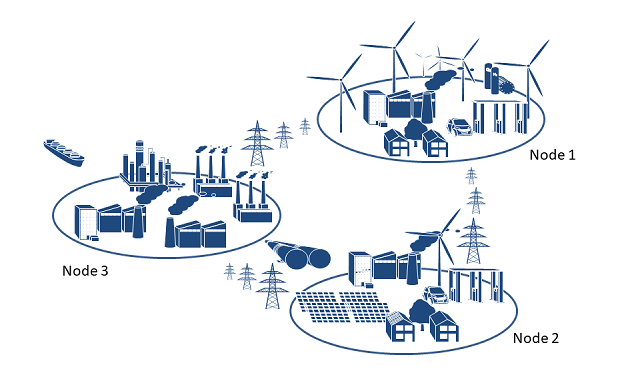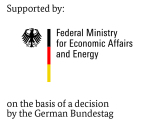Multi-Node Model
Multi-node models expand the assumptions of single-node models by the spatial dimension. The area of interest is split up into several regions – so-called nodes. Every node is represented by its own supply and demand profiles of specified commodities. Connections between the nodes allow the exchange of supplied commodities to fulfill the demand of the other nodes.
The advantage of these multi-node models is the possibility to reproduce the distribution of spatially dependent particularities in the supply and demand profiles: Weather dependent electricity generations, for instance from wind and solar, differ in the potentials for each node. The placement of wind turbines is more effective in nodes that provide weather patterns with higher wind velocities, whereas solar panels are placed in nodes with more frequently sunny weather conditions for an optimal electricity generation. Furthermore, multi-node models allow the consideration and reproduction of transmission components for the exchange of commodities between the nodes, as the electricity grid or gas pipelines, and the calculation of the required transmission capacities.
The fixed conditions of the individual nodes and the transmissions between them are given as constraints for the calculation of the optimal energy system due to an optimization algorithm. The objective can be, for instance, the minimization of the energy system´s total costs or the minimization of green gas emissions.
Within the scope of the METIS project, a multi-node model of Germany will be developed considering all energy sectors. Because of the amount of required data and of the resulting constraints and variables, the computation time increases, and aggregation methods and improved optimization methods become necessary.
 Figure 1. Example visualization of a three-node energy system model.
Figure 1. Example visualization of a three-node energy system model.
The model will be implemented with the open-source system modeling framework FINE [1].

